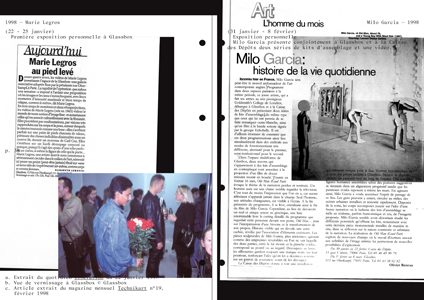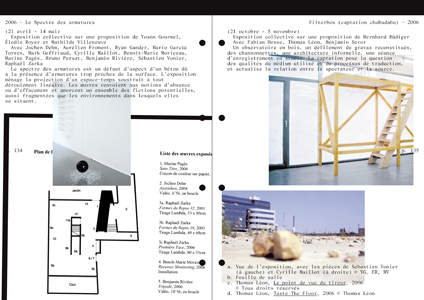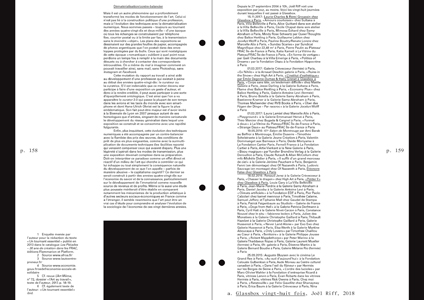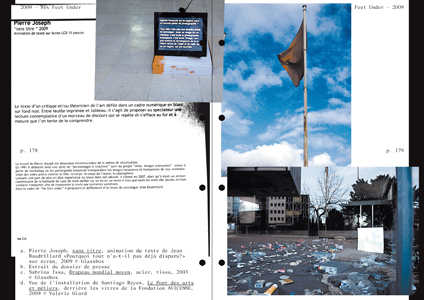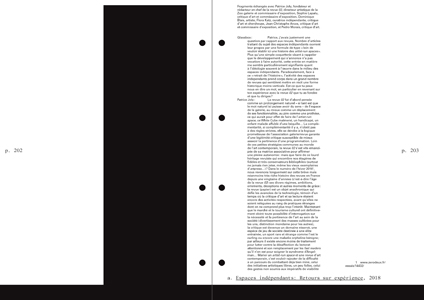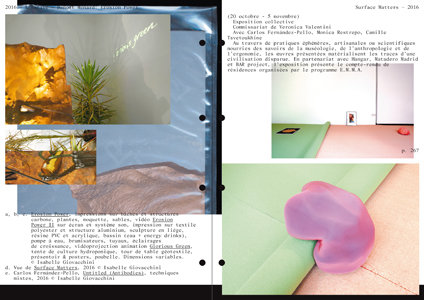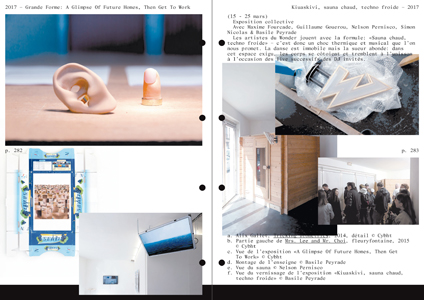A retrospective of the work of one of the first
artist-run spaces in Paris, offering an overall reflection on the emerging conditions of independent and collective spaces, and the way they have impacted the institutional and art scene.
Created in 1997, Glassbox recently celebrated its twentieth anniversary. To mark the occasion, the current team has chosen to present more than 150 of the projects conducted over these past two decades, linking various archives (photographs, communication media, plans ...) to the contributors' texts, shedding a singular light on the way the space emerged and evolved within a context of cultural transition.
At the time, Paris's milieu of institutions was essentially made up of the Musée d'Art Moderne de la Ville de Paris and the Centre Pompidou, only a few galleries were on the scene, and the
Palais de Tokyo was still at the stage of project development. The first artist-run spaces were only just emerging, and art collectives seemed to be an efficient mode of operation. Founded by a few students from the Beaux-Arts de Paris, Glassbox rapidly expanded its activities by reinventing itself – as it often relocated – and passing itself on to the next generation of artists as an experimental and meeting space.
This book is an opportunity for one of the first artist-run spaces in Paris (and one of the remaining few from that era) to look back at the context of its creation, but also to confront the changes in the cultural scene, as well as its professionalization, which came with the development of the figure of the critic and curator.
Beyond a retrospective of Glassbox's work, thanks to the various teams that ran the space and the artists involved in the project, the book offers an overall reflection on the emerging conditions of independent and collective spaces, and the way they have impacted the institutional and art scene.

